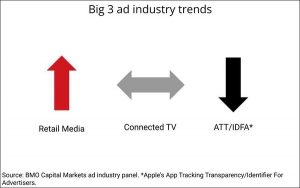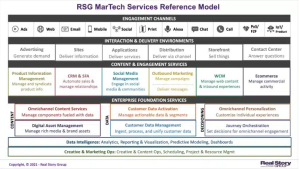
Stories are the most engaging content type for customers. Using strategies like emotional appeal, a timeline, and clever choice of words, stories are an incredibly effective tool for shaping your brand’s character and engaging your customers.
A video is an amazing way to connect with people because it’s visual, easy to digest, and, most importantly, it’s highly accessible and shareable.
All of those good elements of stories combined with the eye-catching nature of videos for the Internet will help pave your way to marketing success.
Here are 4 rules for storytelling that your brand definitely should know, with a few examples to illustrate them.
Be Friendly, Don’t Be Braggy
Engaging video content is not about you. Your customers don’t really care that much about your company. Continuously bragging about how your product is superior to a competitor’s will only be a big turn-off.
An effectively engaging video content talks about your audience base’s goals, problems and shared interests.
Building a strong relationship with your audience base starts by stepping into their circle of trust. You can do this with valuable content, such as providing solutions to common problems, answering questions, and sharing information about the industry’s ups and downs.
Always Include Context
Explaining context is the first thing you should include in a storytelling video. Borrow the basic principles of journalism (what, where, who, when, why, and how) to help your audience better understand your story’s content and context.
Every element in your storytelling video should serve a specific purpose that will gradually make the video better as a whole.
By now, you should have seen DropBox’s very first explainer video:
The video above combines a story and a call-to-action beautifully by making the story a double agent: as a context and as an introduction to the concept of their product.
DropBox’s video uses people’s tendency to forget where they put small things, like keys and wallets, as the context for introducing their service. You should know that when they first launched, cloud storage hadn’t been introduced widely to the public yet.
This context helped convey DropBox’s new concept to the public, since it used a familiar situation as an analogy.
Create Your Own Signature
In order for your video storytelling to work as a brand-building tool, you need to make sure that everyone knows it is your brand, not any other brand. You can achieve this by including a signature in a video that lets people know that it is your brand who made that video.
Creating an identity is essential for brands, which is why there’s something called brand-building. Yes, brand-building is known as a way to increase consumer awareness of a brand. However, it’s also a way to give a brand an identity and worth.
I recommend that business, especially small ones, have a mascot.
Mascots are the easiest way to represent your brand other than using logos, which are far more likely to be forgotten. Good mascots personify a brand, enabling a business’s target audience to better identify, remember and understand a company and its services. As ageless brand representatives, mascots serve as brand amplifiers that help a target audience develop a closer relationship with a business.
But mascots aren’t the only way to make your own signature.
Visual aspects such as character designs, color palettes, and strokes are also common practices in claiming a signature style. However, if you aren’t an artist yourself, this is likely to be the least of your concerns.
Bend the Formal Look
When it comes to video marketing, most corporations tend to avoid casual looks. They love formalities so much that they forget not everyone is an office worker with a suit and a briefcase.
Granted, stepping outside the corporate parameter is not as simple as it sounds. There are some organizational rules that can’t be broken.
However, if you are that kind of brand, you can easily leverage your social media channels or blog comment sections to build a more personalized and colorful communication media.
If Guardian, the notably among the biggest and well-known corporations in the world, can post this colorful, casual image to their Facebook timeline, who says your company can’t?

Takeaway
The guidelines for using a storytelling video as a brand-building tool are fairly simple: Your brand needs to brag less and get more personal with your audience.
By following these guidelines, your video marketing effort should be one step closer to achieving the goal. What good will your amazing video content do if no one watches it?
These are the frames that your content needs to be seen, the principles that will make your audience like you. Not because you offer sales or because you are afraid to lose them, but because you are actually being personal with them.
Business & Finance Articles on Business 2 Community(49)
Report Post





